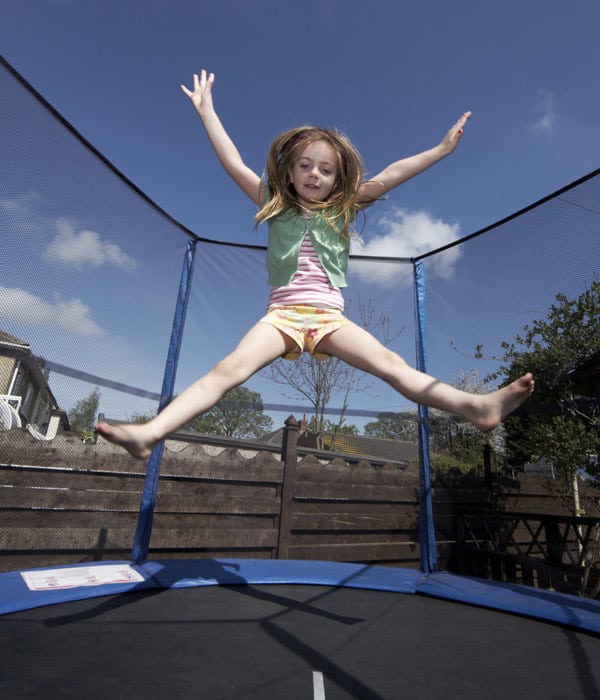
Trampolines can be lots of fun. Many families even have trampolines in their backyards for the kids to play on, but safety is definitely an issue. According to the U.S. Consumer Product Safety Commission (CPSC) there were approximately 94,900 trampoline-related injuries treated in emergency rooms in 2012 and 22 deaths between 2000 and 2009.
For these reasons, the American Academy of Pediatrics (AAP) recommends against having a trampoline at home. However, if you do decide to go ahead and buy a trampoline for your kids, or you already have one in your backyard, you should be aware of the potential injuries and safety precautions.
Trampoline Injuries
Fortunately, most trampoline injuries are not serious enough to cause long-term problems or death. On the other hand, many injuries do require an emergency room visit. The American Academy of Orthopaedic Surgeons (AAOS) states that the most common trampoline injuries are sprains and fractures. Other injuries may include cuts, scrapes, bruises, and concussions. More severe head and neck injuries could lead to paralysis or even death.
Most of the time, injuries occur when more than one child is on the trampoline and they collide into each other. Injuries are also common when children attempt tricks, flips, and stunts on the trampoline. Other injuries occur when a child falls or jumps off the trampoline or lands on the trampoline’s springs or frame while jumping.
Trampoline Safety Tips
If you have a trampoline in your backyard or are planning on purchasing one, it is important to stick to the following safety rules at all times. It could save you and your child a trip to the emergency room.
- Adult supervision is needed at all times. This rule is very important. Adults should enforce proper safety rules and be nearby in case any injuries do occur.
- Take turns. Only one jumper should be allowed on the trampoline at a time to prevent collisions.
- Save the tricks for gymnastics class. Tricks, flips, and stunts should only be performed under the supervision of a trained professional. Improperly-performed tricks are a common cause of injury. Also, do not attempt to jump from the trampoline to another area, like a swimming pool, or jump from a higher surface onto a trampoline.
- Use shock-absorbing pads and safety nets. Shock-absorbing pads should completely cover the hooks, springs, and frame of the trampoline, and safety nets can help prevent falls from the trampoline.
- Check all of the equipment for safety before each use. Inspect all of the components of the trampoline, looking for any signs of deterioration or tears. Make sure all components are attached properly.
- Set up the trampoline on an even surface. The area should also be clear of trees and other play equipment.
- Children under 6 years old should not use trampolines. The AAP reports that this age group has the highest risk of injury on trampolines.
- Use a ladder, but make sure to remove it when not in use. A ladder makes it easier for children to get on and off of a trampoline. However, when the trampoline is not in use, the ladder should be removed to help prevent use of the trampoline without adult supervision.
Trampolines can be great fun for the whole family, but that fun shouldn’t come at the risk of an emergency room visit. Remember to follow the rules and stay safe!